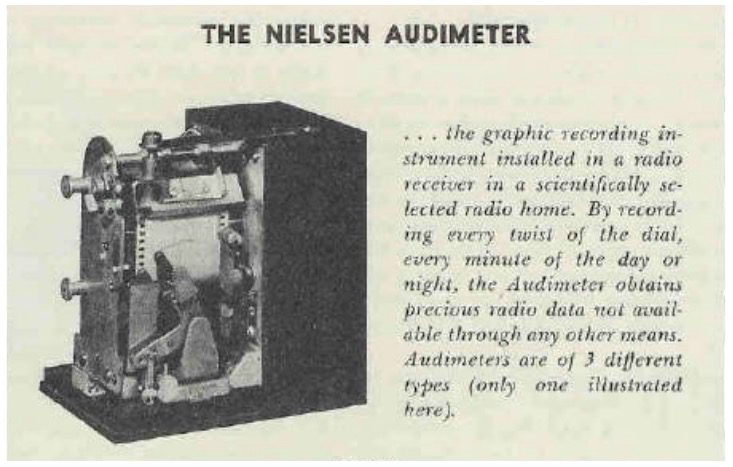Companies Of A Century: Nielsen’s Data Divers Make It A Force In Entertainment Market Research


Editor’s Note: Chief Executive is kicking off a new annual tradition this year by celebrating every sizable (over $100 million in annual revenues) standalone company turning 100 in 2023. Check out the rest of this year’s class for tips, insights and, above all else, the inspiration you need to keep going….and going.
HQ: New York, New York
Revenues: $3.5 billion
Employees: ~15,000+
Arthur C. Nielsen arguably shaped the progress of television production more than any other individual in its Golden Age. In 1950, Nielsen, an electrical engineer by training, developed the first ratings system gauging the audience viewership percentages for different TV shows. His eponymous company, ACNielsen, provided the data to the three major networks (ABC, NBC, CBS), influencing their program renewal decisions.
Ever since, Nielsen has remained a force in entertainment market research. “The definition of television has evolved, but we still produce ratings every day,” says David Kenny, Nielsen CEO. “For companies to win and make things better, they need to keep score. And the way to do that remains market share.”
Arthur Nielsen actually coined the term “market share,” Kenny says, citing the founder’s unique insight—the need to define a market and then measure it every day. In its original incarnation in 1923, ACNielsen conducted quality tests on conveyor belts and turbine generators—not surprising given Arthur’s background in electrical engineering.
During the Great Depression, the company shifted to measuring and analyzing consumer buying patterns at department stores, drugstores and other retail enterprises. By acquiring the rights in 1936 to the Audimeter, a device measuring the number of radio program listeners, ACNielsen developed a national radio index, its first foray into the entertainment market.
As home ownership of television sets boomed during the postwar 1950s, the company was uniquely positioned to adapt its radio consumer rating techniques to the new entertainment medium. A sample of the U.S. population in different regions was asked to attach an Audimeter to their TV sets. The device recorded the channels and shows they watched and relayed the data back to the Chicago headquarters.
Urged on by his son, Arthur C. Nielsen, Jr., Nielsen invested more than $150,000 in a Univac, the first general purpose computer, to analyze the data. The machine predicted the total audience for each program, as well as the age and gender of the viewers. In 1957, Nielsen Jr. became president and expanded the company’s market research for the television, food, drugs, publishing, energy and technology industries (the non-entertainment services were sold in 2021).
The 1980s brought a major challenge in the form of cable-TV viewership subscriptions, which would hit more than 53 million households by the end of the decade. “A core strategy from the start of the company was to always find ways to do things better and grow, which requires the courage to give up the past and change,” says Kenny. “As the three original networks expanded into hundreds of competitors, we adapted our capabilities to continue to properly measure viewership.”
The adaptations continued in 2005, with the development of technology to monitor when people used a DVR to watch a show at their convenience and the use of digital streaming platforms a decade later. Each time viewers shifted to a new video source, Nielsen’s measurement capabilities shifted with them. Last year, the company launched Nielsen ONE, which provides vital viewership demographics across multiple platforms, from broadcast television and cable TV to live and on-demand streaming. “We started by measuring print and radio share and then television, and it’s evolved into streaming and digital entertainment. We’re still measuring how people spend their time,” Kenny says.
The CEO points to Nielsen’s content solutions business unit, Gracenote, which delivers “powerful content analytics,” he says, to top streaming platforms, cable and satellite TV providers, media companies, consumer electronics manufacturers, music services and automakers. Gracenote’s algorithms also produce data for viewers, directing them to shows and music they may like based on their prior choices in entertainment. As Arthur Nielsen, Sr., once said, “If you can put a number on it, then you know something.”


0

1:00 - 5:00 pm
Over 70% of Executives Surveyed Agree: Many Strategic Planning Efforts Lack Systematic Approach Tips for Enhancing Your Strategic Planning Process
Executives expressed frustration with their current strategic planning process. Issues include:
Steve Rutan and Denise Harrison have put together an afternoon workshop that will provide the tools you need to address these concerns. They have worked with hundreds of executives to develop a systematic approach that will enable your team to make better decisions during strategic planning. Steve and Denise will walk you through exercises for prioritizing your lists and steps that will reset and reinvigorate your process. This will be a hands-on workshop that will enable you to think about your business as you use the tools that are being presented. If you are ready for a Strategic Planning tune-up, select this workshop in your registration form. The additional fee of $695 will be added to your total.

2:00 - 5:00 pm
Female leaders face the same issues all leaders do, but they often face additional challenges too. In this peer session, we will facilitate a discussion of best practices and how to overcome common barriers to help women leaders be more effective within and outside their organizations.
Limited space available.

10:30 - 5:00 pm
General’s Retreat at Hermitage Golf Course
Sponsored by UBS
General’s Retreat, built in 1986 with architect Gary Roger Baird, has been voted the “Best Golf Course in Nashville” and is a “must play” when visiting the Nashville, Tennessee area. With the beautiful setting along the Cumberland River, golfers of all capabilities will thoroughly enjoy the golf, scenery and hospitality.
The golf outing fee includes transportation to and from the hotel, greens/cart fees, use of practice facilities, and boxed lunch. The bus will leave the hotel at 10:30 am for a noon shotgun start and return to the hotel after the cocktail reception following the completion of the round.